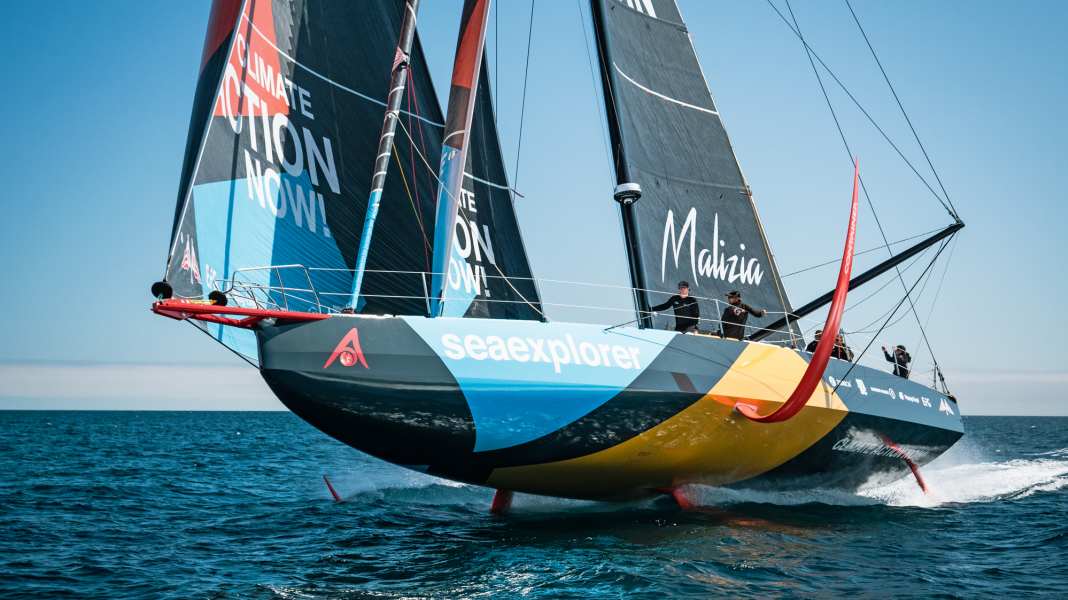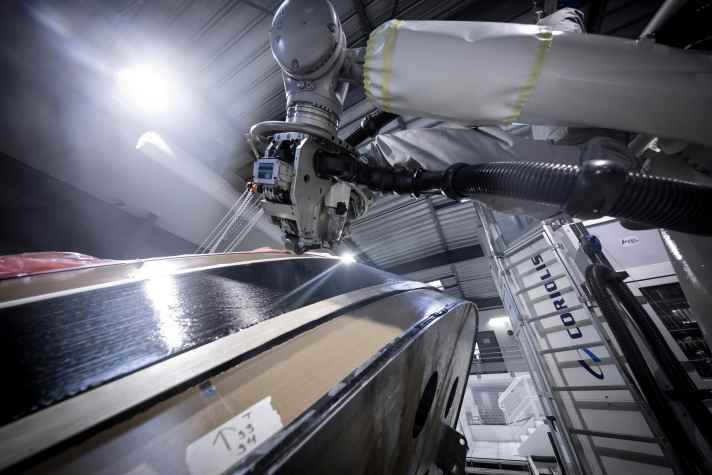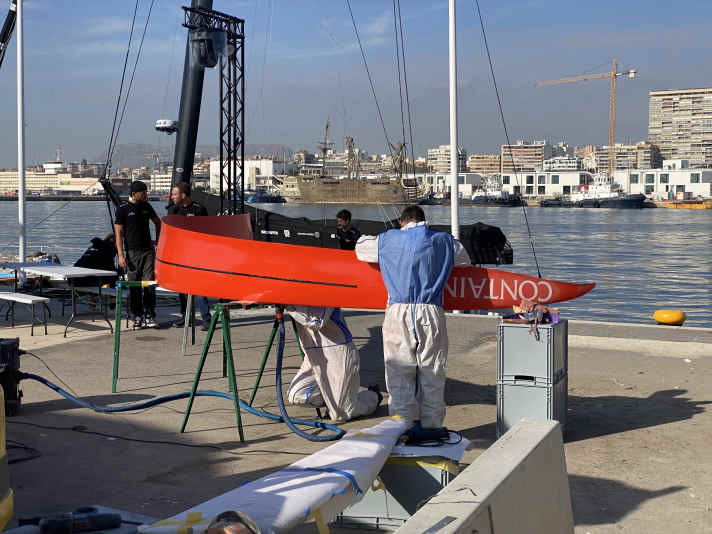
Completely unexpectedly, the standard ultrasound examination of the two profiles revealed that both had severe structural damage that was not visible from the outside. As a result, the foils had to be replaced for the Ocean Race. As the foils cost around 500,000 euros and take almost six months to build, this was a major setback for the team.
We are still investigating exactly how this happened, but it is really unusual with such new foils", Boris Herrmann
"Fortunately, it happened now and not during the Ocean Race. But it was a real blow for us. However, we were lucky in misfortune and were able to fall back on another pair of new foils. Normally it takes six months to manufacture them. All in all, that means an incredible amount of work, the team did a great job and even had to work over Christmas. The new foils will be fitted and adjusted in the next few days. This problem is a setback for our preparations, but the team has pulled together and I think we will come out of this stronger, having managed to solve the problem in such a short time. Now I'm looking forward to getting back on the water with the team and taking part in this great race very soon."

The foils of "Malizia - Seaexplorer" were technically uncharted territory, as they were laminated by robots for the first time in an innovative manufacturing process. Previously, the profiles, which had to be laminated from hundreds of layers of carbon fibre and repeatedly baked in an autoclave, were produced by hand. The new technology was actually intended to produce more homogeneous, higher-quality laminates.
It is still unclear whether the damage is a result of the defect in the upper foil guide, which threw Herrmann back during the Route du Rhum. The metal bolts at the head were broken and the side plates holding the foil were bent. The team had replaced the metal parts before the return passage from Guadeloupe to Alicante and had assumed that the problem had been solved. During the transfer, however, the boat had sailed at high speeds of over 30 knots for the first time in some very rough seas. The cause of the problem has not yet been communicated. Nor has it been revealed whether the replacement foils now being used are from the same manufacturer and were already made for the team or were originally intended for a different project. Boris Herrmann has always emphasised in YACHT interviews that a new generation of foils should only be developed and built after the knowledge gained from the Ocean Race.

The boat will be back in the water this week after the extensive refit and will then complete tests before the first Inport Race at the weekend. The first relatively short leg of the five Imocas and six Volvo 65s will then set off from Alicante to the Cape Verde Islands on 15 January.
